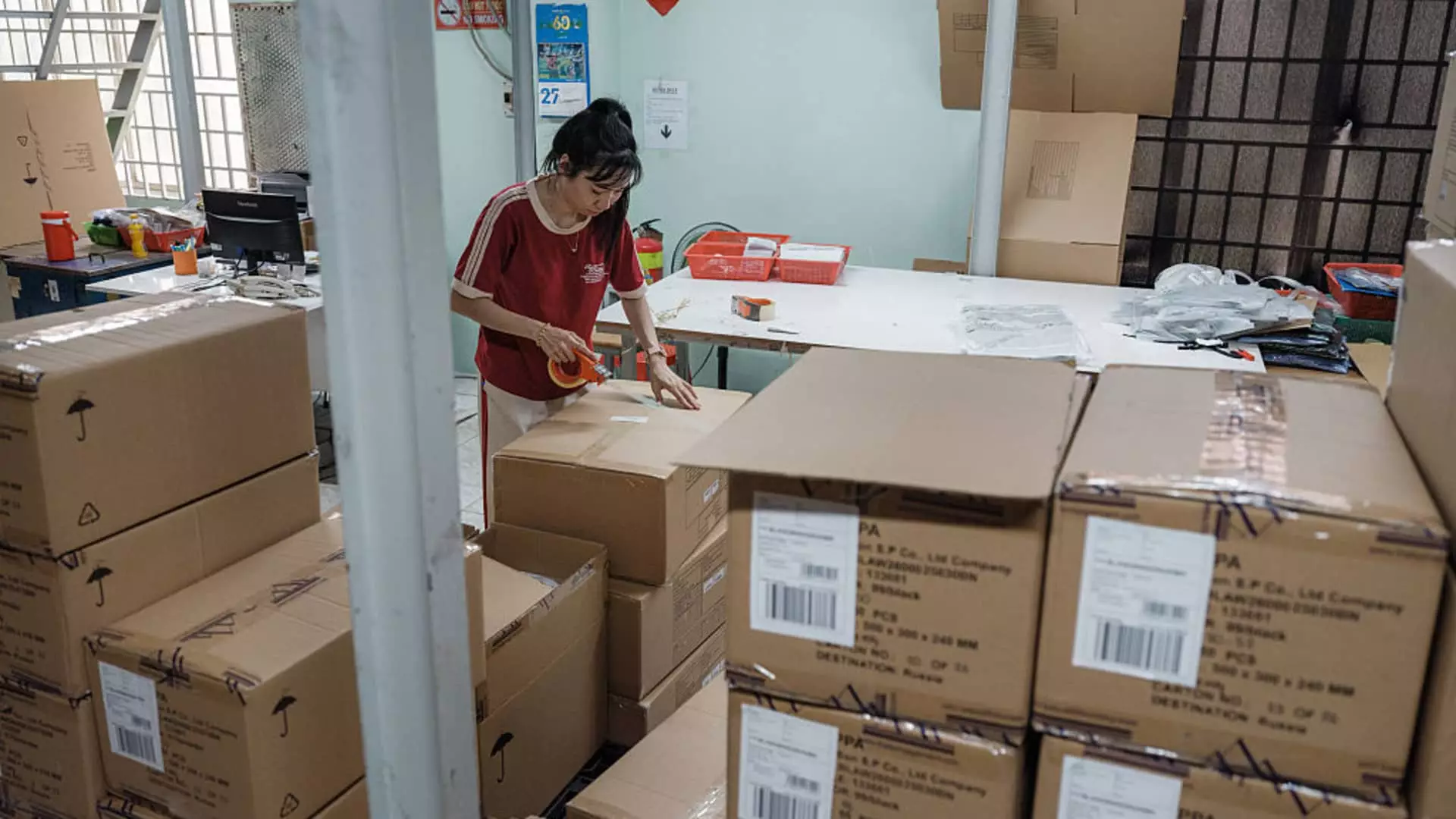The recent developments in U.S.-Vietnam trade negotiations have injected a fleeting sense of relief into an otherwise tumultuous retail landscape. For months, the industry has grappled with the specter of tariff hikes that threaten to unravel the delicate supply chains that have become the backbone of American apparel, footwear, and accessory markets. While the tentative agreement to set tariffs at a reduced 20% instead of the initially proposed 46% appears to be a win at first glance, it should not mask the deeper malaise plaguing the industry. The ambiguity surrounding the deal’s implementation, coupled with the volatile political climate, underscores the fragility of this “success,” which could evaporate if negotiations falter or if tariffs are reimposed unexpectedly.
The optimism among retail executives is decidedly cautious. Many recognize that, even if the 20% rate becomes official, it remains a significant burden that could hamper growth and profitability. The sky-high tariffs from earlier in the year had set costs soaring, forcing companies to scramble for contingency plans. Now, with a tentative deal in place, the industry remains on a precarious cliff edge, aware that trade disputes can swiftly turn back into full-blown crises. The uncertainty over when the deal takes effect only adds to the anxiety—this is not a moment to celebrate but rather a temporary reprieve in a protracted political and economic standoff.
The Strategic Repositioning and Its Hidden Costs
Over the last decade, U.S. retailers have aggressively diversified their supply chain strategies to minimize reliance on China, the traditional manufacturing giant. Vietnam has emerged as a critical alternative, with the country’s factories producing goods comparable in quality and price. This shift was driven not only by tariffs but also by geopolitical tensions, labor market considerations, and the desire to mitigate supply chain risks. Major brands such as Nike, Gap, and American Eagle had planned to leverage Vietnam’s manufacturing prowess to keep costs competitive while maintaining product standards.
Yet, the recent tariff escalation threatened this carefully curated strategy. An increase to 46% would have effectively undone the recent restructuring efforts, forcing companies to absorb costs or pass them onto consumers—both options with significant drawbacks. The potential 20% tariff, although a relief, still presents a formidable challenge. It raises questions about how businesses will sustain profit margins without alienating price-sensitive consumers. The game of balancing tariffs, cost management, and consumer appeal has become an increasingly treacherous one, where missteps could lead to significant losses or a decline in market share.
The ripple effects extend beyond Vietnam, affecting neighboring countries like Cambodia, Malaysia, and Bangladesh, which are also integrated into the supply chain. If tariffs increase, these regions might be pushed back into the spotlight, requiring additional strategic shifts that may further fragment the landscape of apparel manufacturing. The economic calculus for retailers has now become a complex equation with no easy answers—an intricate dance between cost, quality, and consumer satisfaction.
The Consumer at the Crossroads of Political Posturing
One of the most troubling aspects of this tariff saga is its ultimate impact on the everyday consumer. Tariffs act as a hidden tax, quietly inflating prices for goods that Americans purchase regularly. Industry experts and executives acknowledge that even a modest 20% hike in tariffs will push retail prices upward, albeit gradually. For a typical pair of shoes costing around $95, such tariffs could inflate the end price by several dollars, which might seem negligible but carries larger implications.
The question that looms large is: who bears the burden? While companies attempt to shield their profit margins through strategic price hikes, these costs inevitably transfer to consumers. This predicament raises sobering concerns about consumer purchasing power, especially in a climate where household budgets are already strained by inflation and economic uncertainties. Increasing prices threaten to dampen discretionary spending—a vital driver of the retail economy—and may push customers toward more affordable or secondhand alternatives.
Moreover, the timing couldn’t be worse. As economic growth slows and inflation erodes household income, retailers are under mounting pressure to avoid alienating customers. Yet, their options are limited. Raising prices too steeply risks shrinking demand; delaying increases could further squeeze profit margins. This balancing act underscores a broader truth: trade policies rooted in protectionism may offer short-term political gains but at a long-term cost to economic stability and consumer welfare.
Political Risks and the Illusion of Stability
The tentative resolution with Vietnam is, at best, a fragile respite from the chaos that tariffs can bring. It exemplifies the unpredictable nature of international trade politics, where agreements can be rewritten at a moment’s notice. Policymakers often tout these developments as victories, but the reality is far more complex. Trade disputes are inherently political, with incentives that constantly shift based on domestic politics and geopolitical considerations.
For the retail industry and consumers alike, this means walking on a tightrope of optimism and skepticism. The assumption that tariffs will remain at manageable levels is optimistic at best. History has shown that trade agreements are often subject to revision, renegotiation, or abolition—especially in a highly polarized political environment. This instability fuels uncertainty among retailers, discouraging long-term investments and strategic planning.
Furthermore, a policy environment that oscillates between tariffs and free trade erodes confidence in the economic system. It forces companies to adopt conservative strategies, hold excess inventory, and hedge against unpredictable costs—all of which hamper innovation and growth. For consumers, this volatile environment translates into potential price hikes, reduced product choices, and an overall sense of economic insecurity. The apparent “peace” in the Vietnam trade negotiations may be nothing more than a temporary stopgap, with the larger battle for economic stability still looming on the horizon.

